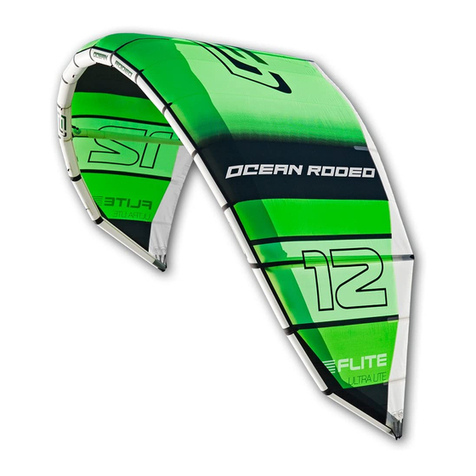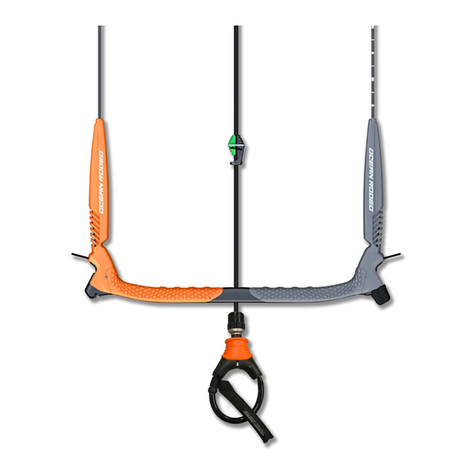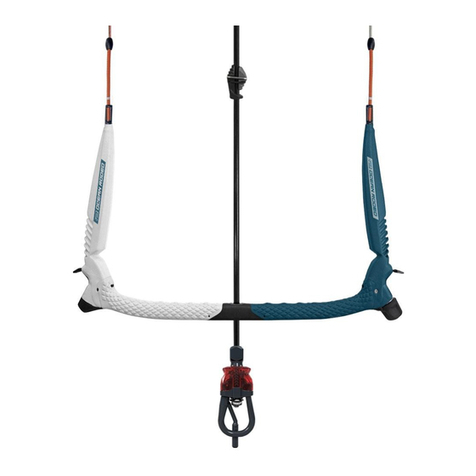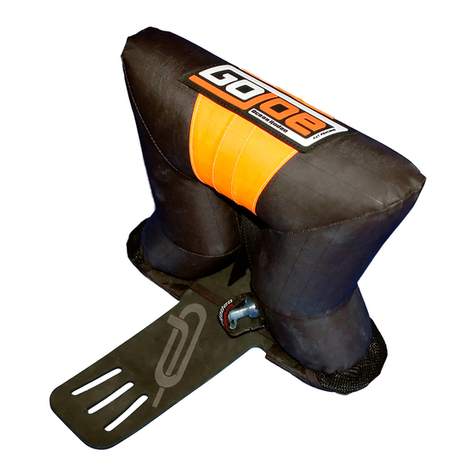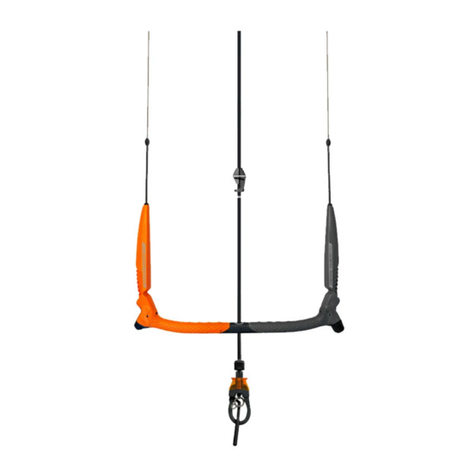
SAFETY WARNING: Kite powered sports can be very dangerous and physically demanding. The
user of this product should understand that participating in kite powered sports may involve serious
injury or death and agrees to observe the following safety precautions:
• Get instruction specic to the type of kite power craft.
• Obtain rst aid training and carry rst aid and safety/
rescue devices.
• Consult your physician prior to beginning kite powered
sports training.
• Always wear a nationally approved personal oatation
device when using a kite on water.
• Always wear a helmet.
• Dress appropriately for weather conditions; cold water and/
or cold weather can result in hypothermia.
• Check your equipment prior to each use for signs of wear
or failure.
• Never kite alone.
• Do not kite in overpowered, gusty wind conditions.
• Do not kite in offshore wind conditions.
• Before launching from an unfamiliar site be aware of any
dangers (rocks, reefs, currents, changeable weather, etc).
• Scout unfamiliar sites before launching.
• Never launch from an area with any obstacles closer than 2
line lengths downwind (people, rocks, etc).
• Do not kite near power lines!
• Do not ask a non-kiter to assist in the launching or landing
of a kite.
• Always use the kite with a functioning safety system.
• Always prevent kites from inadvertently launching on land
by weighting with sand, gravel, etc.
• Always announce when you are going to launch your kite
so people can be prepared to move in the event of a gust or
a problem.
• Disable an unattended kite by: removing the lines; placing
the kite leading edge down, facing the wind; and weighting
with sand, gravel, etc.
• Do not exceed your kiting ability. Be honest with yourself.
• You must not use alcohol or mind altering drugs prior to
using this product.
